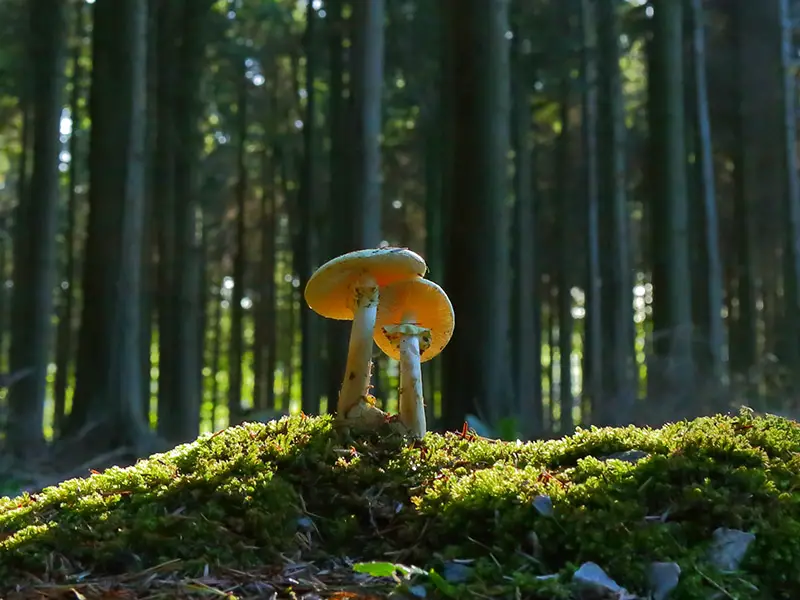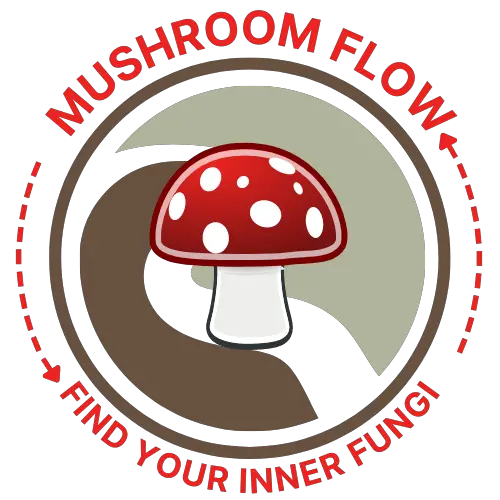We now know that fungi are not plants, nor are they animals. They are actually in a separate kingdom. So if they are not animals or plants, how do fungi get energy? Do fungi use photosynthesis and if not, how do they survive without it?
Fungi can not use photosynthesis, the process of synthesizing food from sunlight, since they lack the essential green plant cell membrane that contains chlorophyll. Rather than get their food from photosynthesis, fungi are similar to animals in that they metabolize matter for energy.
How on earth do they consume organic matter for energy? Let’s break down (pun intended) just how mushrooms eat, produce energy and whether they create or clean up waste.

How do Fungi get energy?
Fungi need to consume matter to survive. They cannot consume food as plants or animals do.
Fungi do not have chlorophyll and therefore cannot use photosynthesis. Instead, fungi consume all the nutrients they need to thrive, grow, and reproduce, by breaking down their food sources using enzymes. This process of fungi digesting food is referred to as heterotrophy.
Kingdom Fungi certainly wouldn’t mind, however, if you dropped a portion of your sandwich or fast-food burger in your vegetable garden. Because fungi will find that portion of discarded food, cover it and eventually absorb every morsel of it. Yes, even those pesky onion bits that are a part of every fast-food burger.
The fungus in our garden soils gets more than enough nutrients and sustenance from the plant root systems, fallen tree debris and decaying animal matter. Metabolizing organic matter, or heterotrophy, feeds fungi above and below ground. The main part of fungi is an extensive, underground root-like system, known as mycelium.
Mycellium is a vast network of tiny, white threads (hyphae) that grow underground or inside of organic matter to take in food and reproduce.
So, if the underground root system of mycelium breaks down and ingests nutrients in the soil, where do those flowering fungi bodies that are visible in the garden come from and what function do they perform?
The mushrooms caps and stems found above ground are the fruiting bodies and an essential part of the fungi reproductive process. Mushrooms reproduce by releasing small seed-like particles from their caps, called spores.
Just under the mushroom cap a thin veil covers delicate gills that contain spores. When the veil breaks spores are released. Not just one or two spores, but some types of mushrooms will release trillions of them.
Spores are not unique to the fungal reproduction process. Bacteria can also release spores. Both can colonize that bit of food left behind in the garden, or tomato left to rot on the vine. This is why that bit of food or rotting tomato will develop a layer of mold. Given time, that mold will eventually devour whatever food source it has latched onto.
In addition to digesting and reproducing, mushrooms also effect our environment in terms of waste.
Do fungi create or clean up waste?
Fungi both consume and create so called waste. Here are just a few examples:
Mushrooms consume organic matter and return vital nutrients to the soil. Known as nature’s recyclers, fungi perform a critical role enriching soil for plants to thrive.
Similar to animals, mushrooms take in oxygen and expel carbon dioxide. During decomposition, fungi also excrete water.
In mushroom cultivation, there’s an additional waste product created from the used mushroom substrate. Spent mushroom substrate can be recycled and used as a soil topper or added to compost.
In the past 30 years, mushrooms have been strategically used to clean up polluted environments such as oil spills. The process of putting mushrooms to work to decontaminate areas is called mycoremediation.
Mushrooms can also clean and improve air quality, not only in the wild but in experimental urban applications such as this tiled wall in the UK that’s filled with spores and substrate. Fungi can absorb air pollutants safely and use it as food to grow.
Final Thoughts
Nearly every garden and forest has hidden mycelium with mushrooms that may not use photosynthesis, but rather get their energy by ingesting nutrients from decaying plants and animals.
Our close fungi relations play an important role in breaking down organic matter to smaller particles to enrich our soils, helps plants to flourish and can help us clean up pollution. In addition, many mushroom varieties play a vital role in our lives as culinary ingredients and medicinal supplements.
